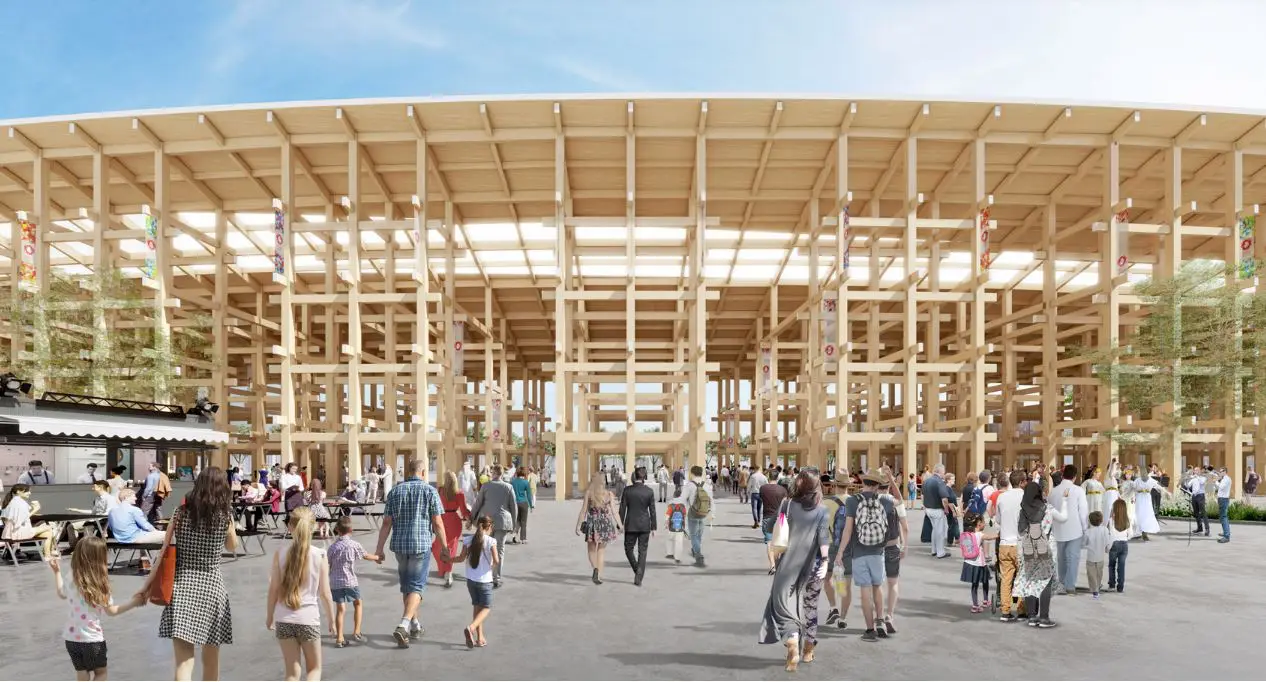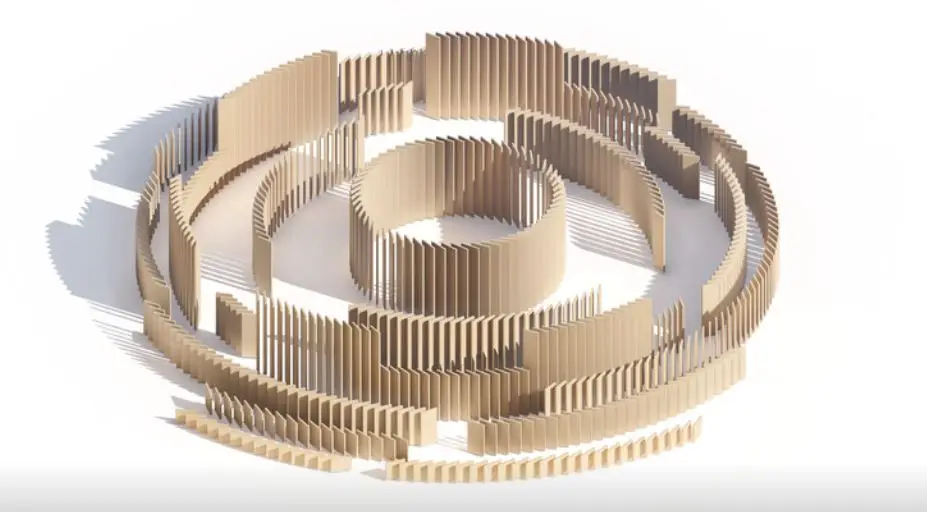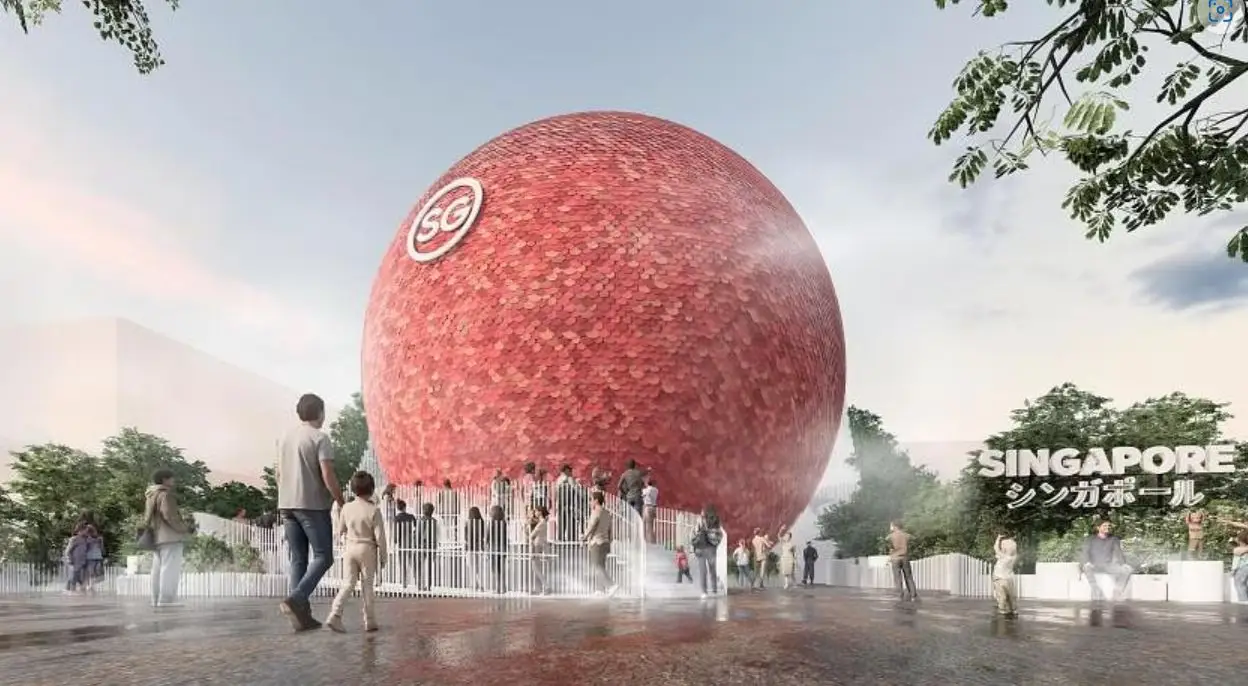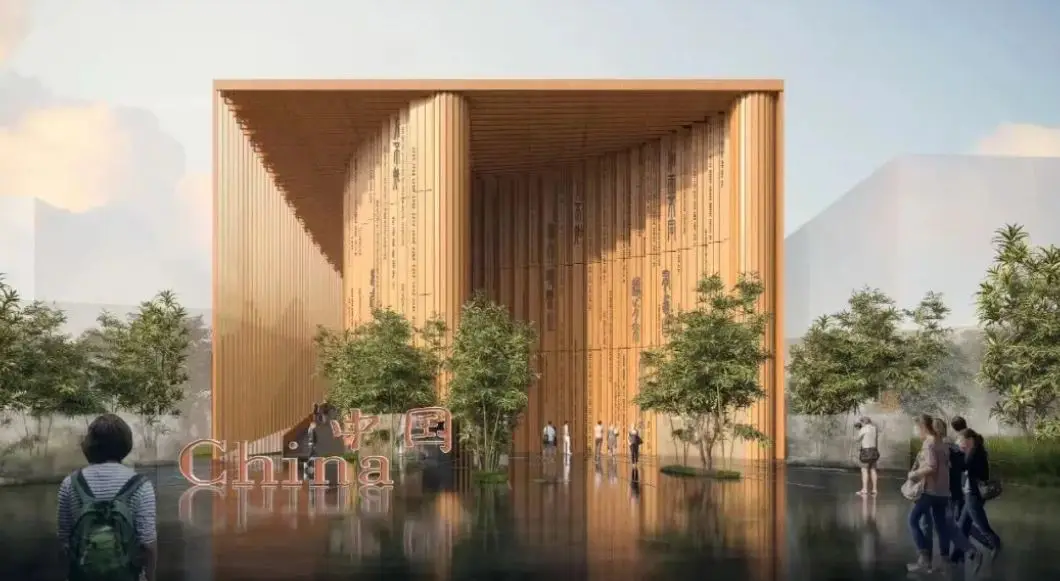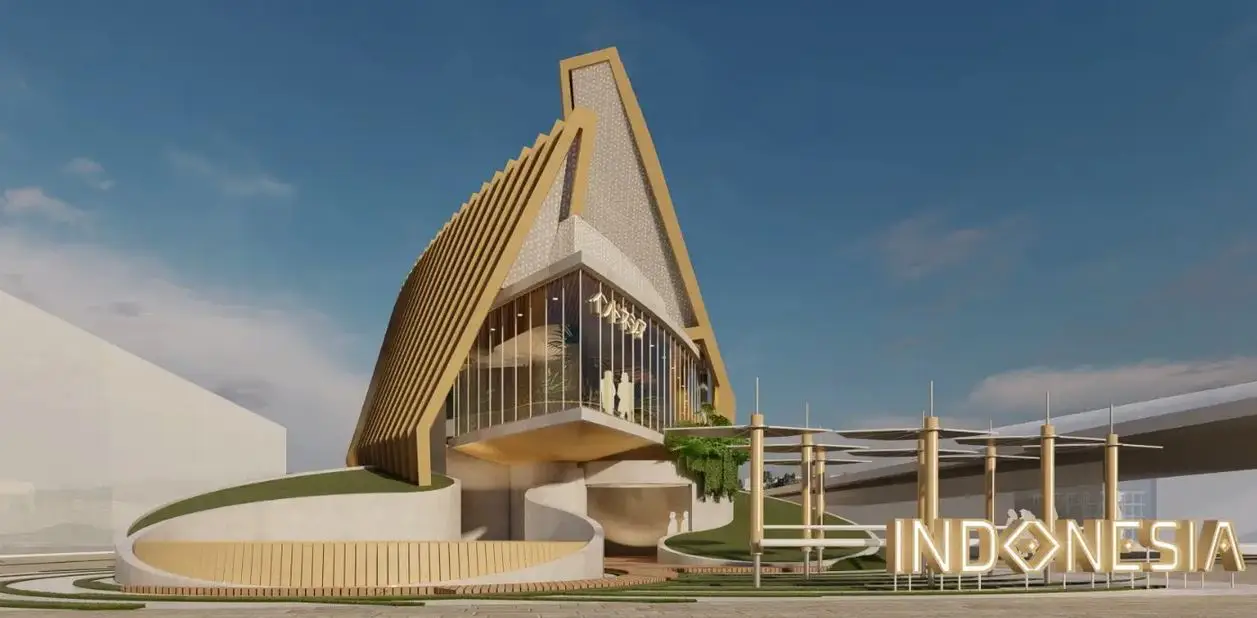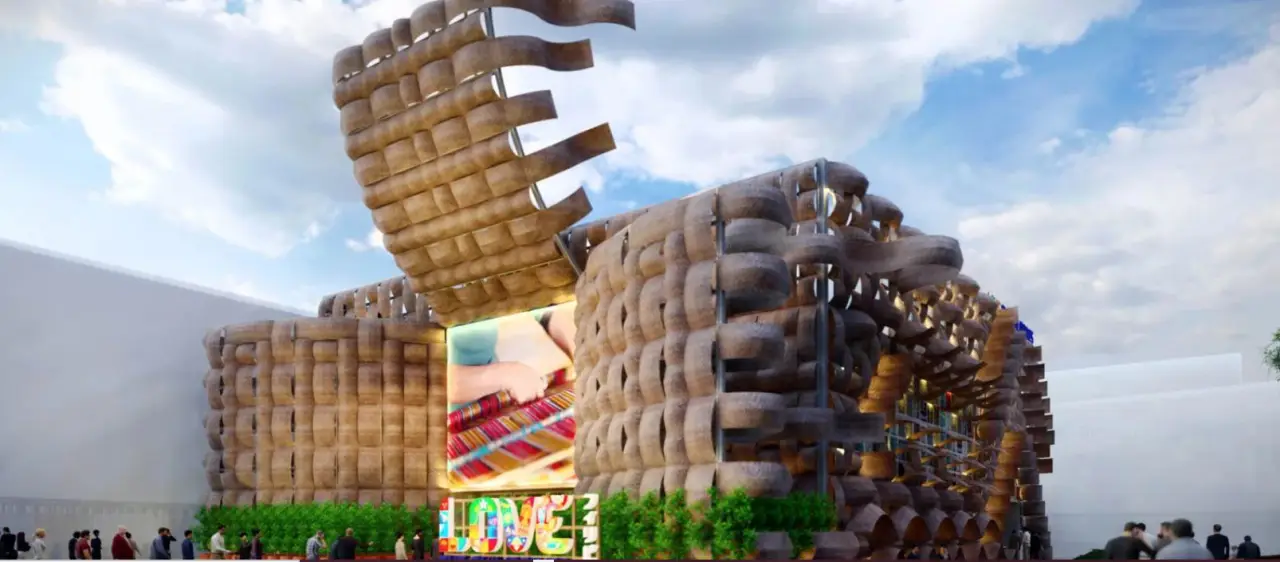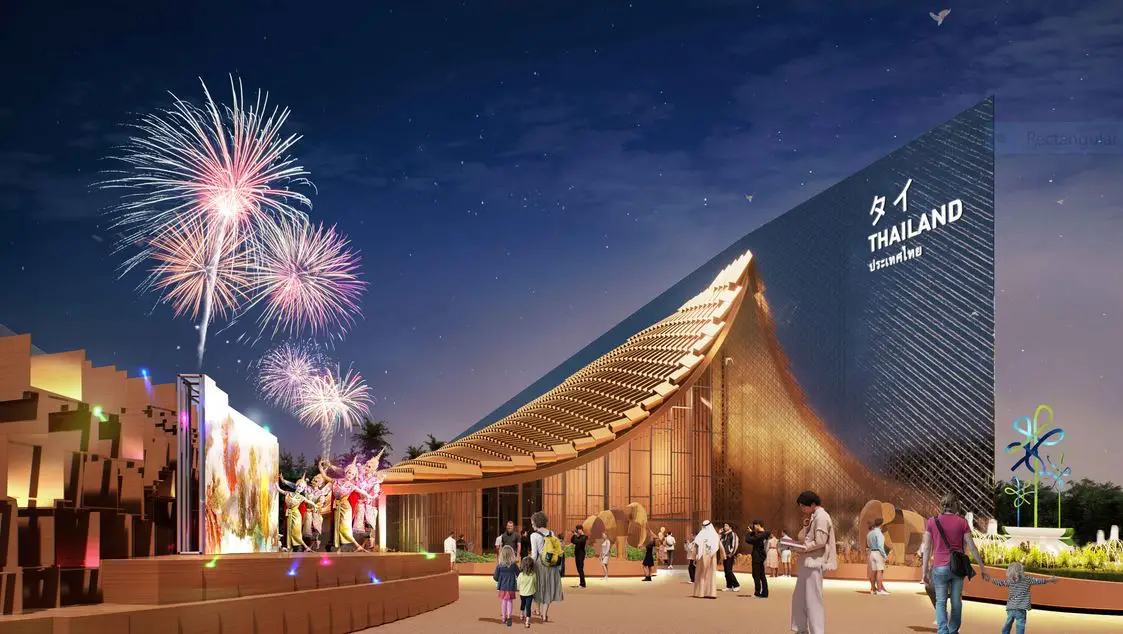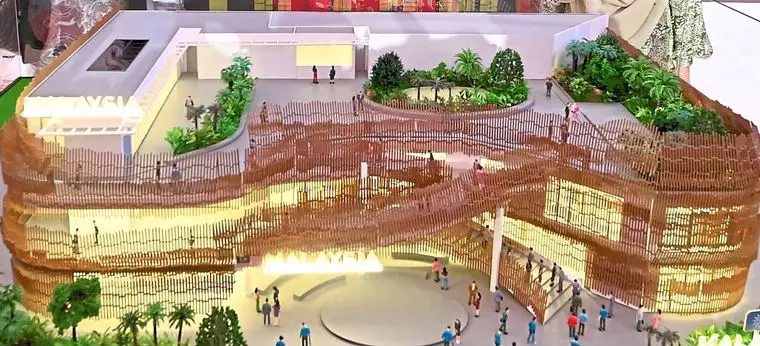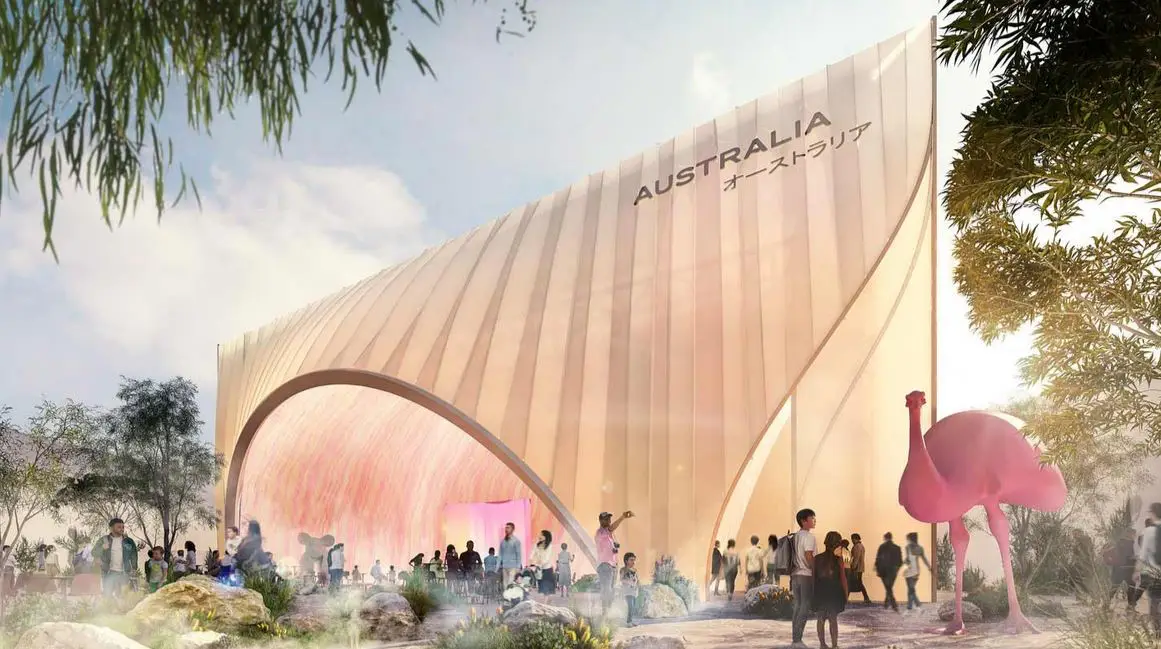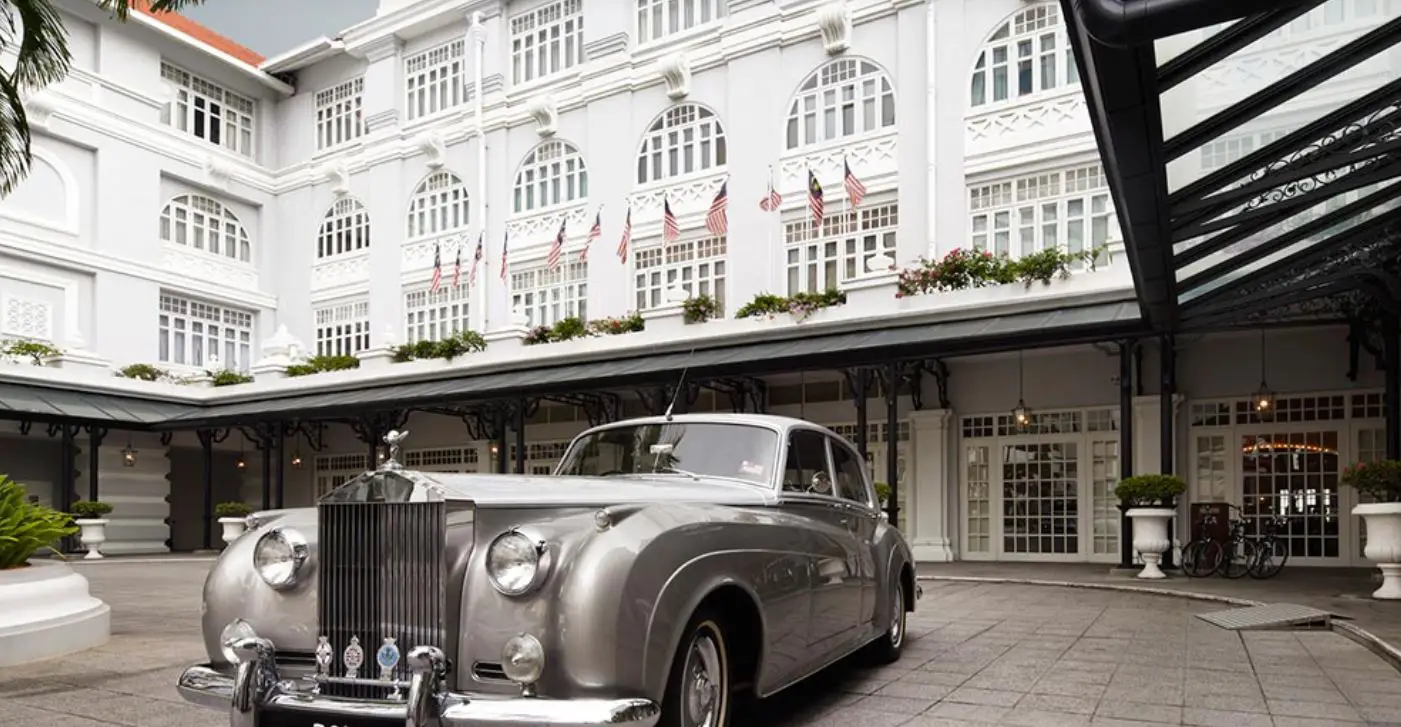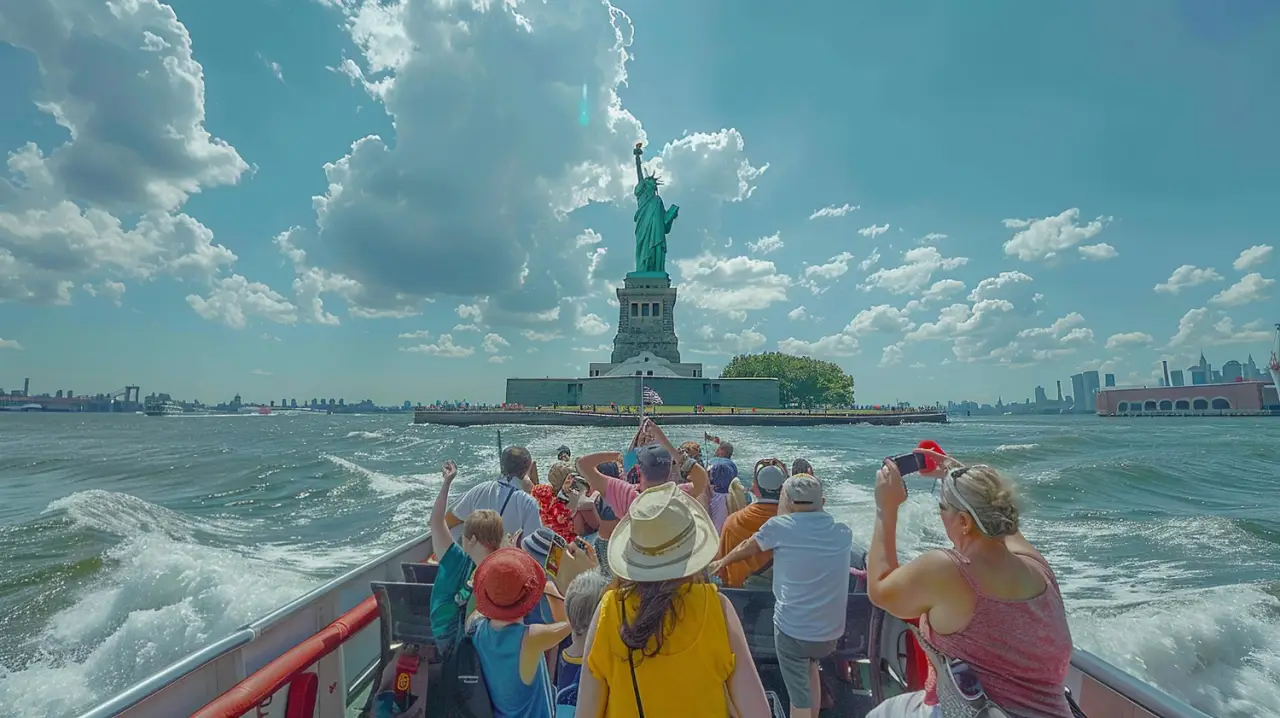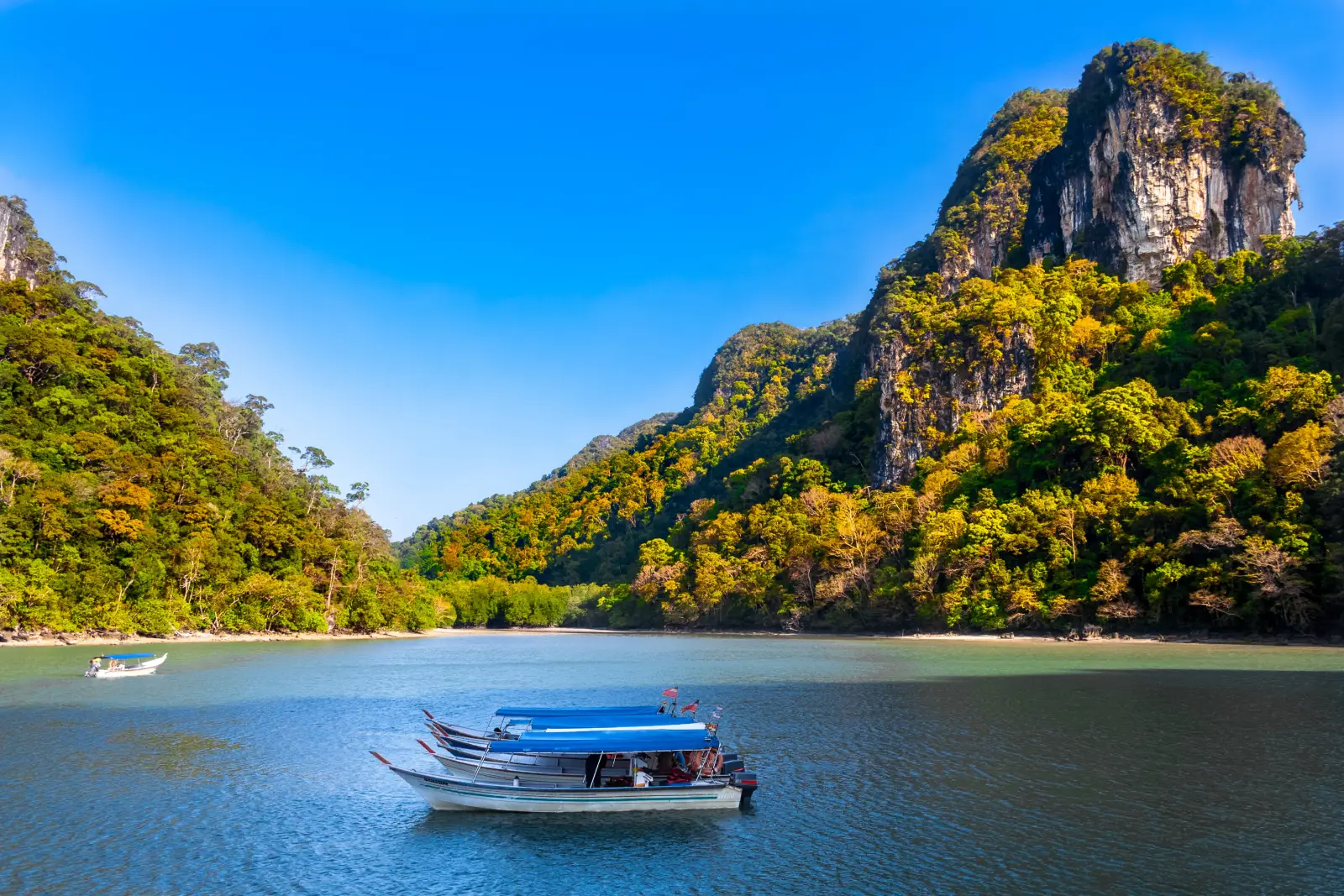Traditionally, the World Expo events have contributed iconic landmarks to their host cities, including the Eiffel Tower built for the 1889 Paris Expo, and the Seattle Space Needle, built for the 1962 Expo.
The Expo 2025 Osaka will take place from April 13 to October 13, 2025.
The Grand Ring is the symbol of the Expo 2025 Osaka site. When completed, it will be one of the world’s largest wooden structures. It will be used as the main route of flow around the venue, providing smooth movement of crowds as well as a comfortable space to stay out of the rain, wind and sun.
From the rooftop of the Grand Ring, the entire venue can be viewed from various points. Visitors can enjoy the charms of the surrounding sea and sky, the Seto Inland Sea, the spectacle of the setting sun and the city of Osaka.
The national pavilions will be located within this 60,000 sqm Grand Ring. Here are visuals of some of the national pavilions from Asia Pacific.
Japan
The Japan Pavilion, with its circular structure, embodies the cycle of life and stands as a distinct presence befitting the host country’s pavilion. Its distinguishing feature: a great circle of innumerable wooden planks made of cross-laminated timber. centres on the theme “Between Lives,” emphasising cycles of transformation that shape life across plants, animals, and societies.
The Pavilion is also designed to function as a “living” structure, featuring a biogas system that converts waste from the Expo into energy, symbolising renewal and sustainability. This process is visible to visitors, allowing them to observe the Pavilion as it powers itself through decomposition and regeneration. The Pavilion offers multiple entrances and exits, each presenting a different narrative, ensuring that every visit reveals a unique story centred on the eternal cycle of life.
Singapore
Singapore, often referred to affectionately by its citizens as the “Little Red Dot”, will build a seven-storey high red sphere as its pavilion. Dubbed the “Dream Sphere,” the pavilion will showcase interactive art installations as well as food, heritage and culture to highlight the Singapore’s appeal as a top travel destination.
On 10 January 2024, Singapore became the first country to break ground and start building its pavilion, Its facade alone comprises more than 20,000 discs made of recycled aluminum. This would save an estimated 104 tons of carbon dioxide emissions, or the equivalent amount absorbed by 4,100 trees annually.
South Korea
Hallyu, or Korean Wave, is a term used to describe the growing popularity of South Korean culture such as K-pop music, K-dramas, movies and cuisine around the world.
So it is fitting that South Korea’s pavilion will feature a giant screen displaying K-pop videos and showcase the country’s cutting-edge technology with exhibitions blending traditional and modern Korean culture. Visitors will also have a chance to experience enjoy traditional Korean cuisine at a restaurant.
China
China embraces bamboo-inspired minimalism for its pavilion, inspired by traditional bamboo slip scrolls used for writing in ancient times.
The façade of the building is adorned with inscriptions of poetry which harmonises seamlessly with the garden landscape of pools and bamboo shadows in front of the pavilion. Gaps in the facade will allow sunlight to filter through to provide natural light to the inside.
Indonesia
The motif of the Pavilion is a “ship.” Indonesia, the world’s largest archipelago nation and the world’s second-largest biodiversity, will showcase its natural and cultural richness, as well as its journey to the future, including the construction of a new capital in Nusantara on the island of Borneo.
The ship design represents sustainable development and symbolises future exploration.
The Philippines
The “Woven” Pavilion boasts an interactive live performance facade showcasing traditional dance and crafts that embodies the Filipino spirit of creativity and connection. Celebrating diversity, the facade also features 212 handwoven textiles from the largest collaboration of weavers in one project.
Each piece tells a unique story reflecting each community’s rich heritage, tradition and art.
Thailand
With the aim to create a design that embodies and clearly communicates Thai cultural identity in a way that is recognisable by people around the world, elements of ancient Thai architecture will be applied to the Pavilion.
This includes the “Chom Hae” traditional-styled high slope pitched roof with its characteristic multi-layered design. A motif pattern mimicking woven rattan webbing is used to express the connection between beliefs and wisdom of the Thai people.
Malaysia
Malaysia’s Pavilion will showcase the country’s advancements and aspirations in sustainable agriculture, energy transition, smart living, advanced manufacturing, environmental management and green tourism.
The Pavilion, inspired by the traditional Malaysian weaving called ‘songket’, would also serve as a vibrant representation of Malaysia’s theme in integrating its rich tapestry of cultural heritage, weaving together traditions and innovation.
Australia
The Pavilion is inspired by the flowering blossom of the iconic Australian eucalyptus tree which represents the diversity and dynamism of Australian people. Inside the Pavilion, visitors will embark on a one-of-a-kind immersive adventure following the sun across Australia.
This multisensory experience will allow visitors to hear the sounds of fauna, gaze into the night sky, and celebrate its ocean environment.
You can also read about the national pavilions of Europe and, North America & the Middle East.

